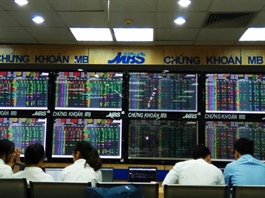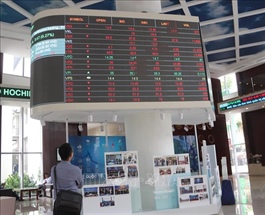Startups urged to plan ahead for IPO success
Startups urged to plan ahead for IPO success
As Vietnamese startups evolve, the conversation shifts towards choosing the right initial public offering strategy, balancing the advantages of each type with the crucial need for securing private investment to ensure successful execution.
In March, the US Securities and Exchange Commission (SEC) approved Nasdaq’s proposal to modify its initial listing liquidity requirements. These changes, effective April 11, stipulate that companies listing on the Nasdaq Capital Market must raise at least $15 million through their initial public offering (IPO) to meet requirements on market value of unrestricted publicly held shares.
This is unless they qualify under the net income standard, which requires a minimum raise of $5 million, and increase of $1 million over previously.
Hiren Krishnani, IPO director of Corporate Platforms at Nasdaq, warned that there are huge misconceptions that the Vietnamese founders have about accessing capital markets.
“Many Vietnamese founders still view IPOs as the final goal, but in reality, going public is just the beginning of a demanding journey. Successfully listing and operating as a public company requires deep preparation and ongoing discipline,” he said.
A key recommendation for companies is to begin operating like a public company long before going public, he explained.
“This means strengthening internal controls, building a capable executive and finance team, establishing sound corporate governance, and starting to report performance on a quarterly basis. Doing so, especially in the first two quarters after listing, would help ensure that, once listed, public reporting becomes second nature rather than a reactive obligation,” Krishnani said.
“As Vietnamese private companies mature, it’s important they recognise the multiple paths to liquidity now available, from traditional IPOs to special purpose acquisition companies (SPACs) and direct listings. Each route offers different advantages and should be strategically considered based on a company’s goals and readiness.”
On April 10, Becamex IDC announced a resolution from its board of directors to postpone its IPO up to $835.2 million, aiming at increasing charter capital. The decision marks the suspension of what would have been the largest share auction in the history of Vietnam’s stock market.
Benjamin Sheridan, managing director and senior partner at BCG Singapore, said that Vietnam is well-positioned to attract more private capital despite a high rate of broken deals.
“Having spent seven years in Southeast Asia, with much of that time spent immersing myself in this market, one thing I’ve noticed anecdotally is the significant volume of opportunities and deals that, despite being incredibly exciting and aggressively pursued by investors, ultimately fail to close,” he said. “Vietnam is experiencing impressive domestic growth supported by strong foreign investment. However, there is still a gap in foreign and domestic private capital, creating a significant opportunity for investors.”
Chris Milliken, partner at Baker McKenzie Vietnam, said that the best time to think about an exit is actually during the investment phase. Clients frequently approach us with questions about how they can exit, whether through an IPO, a sale, or other routes.
“To enable smooth exits, it’s crucial to build the right infrastructure, as it drives investment. A clear exit path through the stock exchange encourages more companies to list, boosting market liquidity. Considering exits early in the investment process fuels more opportunities and strengthens the market,” he said.
To develop a more robust IPO market, Milliken suggested that Vietnam learn from successful capital markets such as the US, UK, Hong Kong, Japan, and South Korea. Despite their differences, these markets all focus on two key objectives: protecting investors and ensuring a liquid, transparent environment for trading securities.
“Introducing a takeovers code would offer greater clarity and predictability for both buyers and sellers in M&A and privatisation deals. Easing certain IPO requirements, like share lock-up periods, could also make the market more appealing to both domestic and international investors,” he added.
While Japan currently does not allow SPACs due to regulatory caution, the global trend has shown fluctuating interest. SPACs surged in popularity in 2020-2021, but performance issues and tighter regulations, especially from the US SEC, have tempered enthusiasm.
Kazuhiko Yoshimatsu, general manager and chief representative at the Singapore branch of the Tokyo Stock Exchange, noted that key red flags for IPO readiness include lack of internal investor relations capabilities and unclear financial storytelling. Companies are advised to build clear, data-backed narratives and projections covering at least 6-10 months post-IPO.
“In the context of US IPOs, the process follows a disclosure-based regime, where companies must meet regulatory prerequisites, particularly in corporate governance. Key requirements include having a majority of independent board members, establishing committees, and adhering to SEC regulations,” he said.
“Foreign issuers must file as F-1, while US-based companies file as S-1, both requiring SEC approval. Companies must also show sound financial reporting, operational viability, and maintain a shareholder base of at least 1-2 million, with active participation from 300-400 traders. Market makers play a key role in facilitating listings,” Yoshimatsu added.

Startups urged to plan ahead for IPO success, Photo: Shutterstock |
Michael Hung Nguyen, deputy CEO, Masan
Reflecting on the exit options available to investors who have worked closely with us, we have historically offered three proven pathways. The first is through secondary transactions, where a financial investor acquires the stake of a preceding private equity investor, an approach that has consistently delivered results across numerous deals.
The second route involves strategic partnerships, exemplified by our collaboration with Singha from Thailand, which facilitated the exit of KKR’s investment.
The third and perhaps most transformative option is through the public markets. Yet, like all markets, it is not without its headwinds. In today’s climate, companies often prefer to go public alongside others, as synchronised listings foster a dynamic ecosystem and attract broader investor attention.
Unfortunately, the current environment poses greater challenges in generating the excitement and momentum necessary for successful public offerings, particularly amid heightened global uncertainty.
Nevertheless, meaningful progress is still being made. Investors, while cautious, remain deeply interested in learning about potential market entrants, and the appetite to engage with companies on the cusp of listing is far from diminished.
That said, we would welcome greater participation from our peers. A more active IPO landscape would not only build confidence among market participants but also serve as a catalyst for capital market development.
Drew Bernstein, co-chairman and co-CEO MarcumAsia
Raising capital ultimately comes down to two essential elements. Firstly, you must prove your science, or in broader terms, your core value proposition. If you are a biotech company, that means showcasing the strength of your scientific team and the credibility of your research. If you are in manufacturing, you need to clearly demonstrate what makes your product or process special.
Second is your ability to prove monetisation. It is not enough to have a strong idea, but you must show how it can generate real, scalable revenue. Many innovations fail not because they lack substance, but because there is no viable plan to bring them to market or scale them profitably. Investors need to see not only potential, but a clear, time-bound pathway to returns.
When it comes to preparing for an IPO, these two factors become even more important. Public markets demand clarity, credibility, and commercial traction.
If you can show both the strength of your innovation and how it translates into revenue, you will not only attract capital, you will be ready to go public.
But beyond the business fundamentals, preparation is everything. I have met with many Vietnamese companies, and while some discussions lasted 45 minutes to an hour, the reality is that when you meet with investment bankers, you have five minutes, maybe less, to make your case.
They often decide within the first few minutes whether your company is worth backing. That’s why your business plan must be tight and your elevator pitch must be honed to perfection. Because of any given day, these bankers are reviewing 20 other deals. If Vietnamese companies want to stand out and make it to the IPO stage, they need to be more prepared, more compelling, and more ready than anyone else in the room.
- 20:47 03/05/2025

























